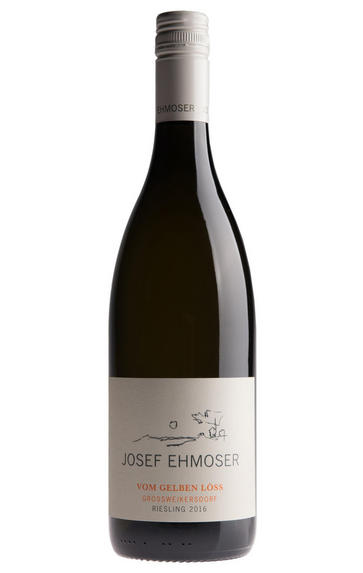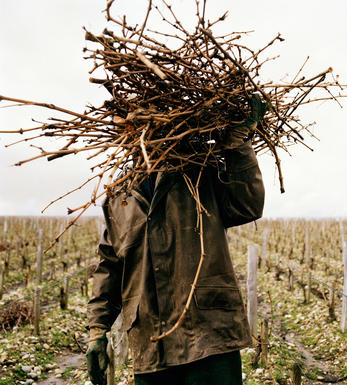
About this WINE

Josef Ehmoser
The Josef Ehmoser winery is located in Tiefenthal in the community of Grossweikersdorf, 30 kilometres east of Krems and 45 kilometres west of Vienna. Here the third generation vintner Josef Ehmoser and his wife Martina are enriching the well known Austrian winegrowing region of Wagram. Five aspects make the wines from the Ehmoser Winery distinctive: the climate, the soil, the location, the varieties and the vintner himself.
The Wagram produces "wines with terroir" and the loess soil unique to Europe plays an important role. On a base of primitive rock lies marine sediments and clay on which the loess reaches up to twelve meters high. Vineyard terraces are found on this deep soil. Loess is especially fertile, has a lime concentration of up to 30 percent, and optimally stores water.
The vineyards of the Josef Ehmoser Winery are located in Tiefenthal on the left bank of the Danube, somewhat removed from the river, between Grafenegg in the west and Heldenberg in the east. The vineyards grow to their perfect natural maturation on the sloping sites south of the Danube such as Hohenberg (deep loess), Steinberg (loess with sand) and Georgenberg (deep loess).
Their philosophy is to "respect nature" and this attitude is also reflected in their wines. In order to preserve the power of nature in wine-growing intervention is as little as possible and but as much as necessary on the natural landscape. They say "we are mere observers with respect to these elements. It is only in harmony with nature that the true character of our wines thrives. The grapes achieve harmonious ripeness through respect for the processes and conditions and through understanding our wines.... we also apply this philosophy in our work in the wine cellar. We support the potential of our wines, stressing their personality without forcing them on a prescribed path. Thus the power of nature remains fully intact."

Riesling
Riesling's twin peaks are its intense perfume and its piercing crisp acidity which it manages to retain even at high ripeness levels.
In Germany, Riesling constitutes around 20% of total plantings, yet it is responsible for all its greatest wines. It is planted widely on well-drained, south-facing slate-rich slopes, with the greatest wines coming from the best slopes in the best villages. It produces delicate, racy, nervy and stylish wines that cover a wide spectrum of flavours from steely and bone dry with beautifully scented fruits of apples,apricots, and sometimes peaches, through to the exotically sweet flavours of the great sweet wines.
It is also an important variety in Alsace where it produces slightly earthier, weightier and fuller wines than in Germany. The dry Rieslings can be austere and steely with hints of honey while the Vendages Tardives and Sélection de Grains Nobles are some of the greatest sweet wines in the world.
It is thanks to the New World that Riesling is enjoying a marked renaissance. In Australia the grape has developed a formidable reputation, delivering lime-sherbet fireworks amid the continental climate of Clare Valley an hour's drive north of Adelaide, while Barossa's Eden Valley is cooler still, producing restrained stony lime examples from the elevated granitic landscape; Tasmania is fast becoming their third Riesling mine, combining cool temperatures with high UV levels to deliver stunning prototypes.
New Zealand shares a similar climate, with Riesling and Pinot Gris neck to neck in their bid to be the next big thing after Sauvignon Blanc; perfectly suited is the South Island's Central Otago, with its granitic soils and continental climate, and the pebbly Brightwater area near Nelson. While Australia's Rieslings tend to be full-bodied & dry, the Kiwis are more inclined to be lighter bodied, more ethereal and sometimes off-dry; Alsace plays Mosel if you like.



Buying options
Add to wishlist
Description
Elegant aromas reminiscent of peach and lime blossom. The palate is vibrant, with juicy acidity, ripe florals that echo the character on the nose. Dry, fresh finsh.
Katherine Dart MW - Wine Buyer
wine at a glance
Delivery and quality guarantee